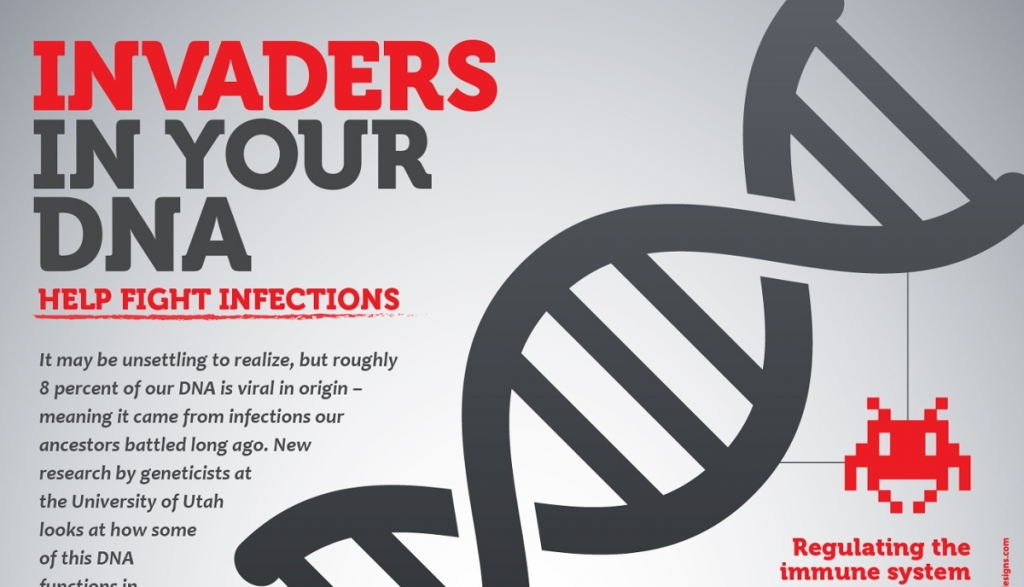
Cells must regulate their innate immune pathways so that they can respond rapidly to pathogens, yet avoid aberrant activation that can lead to inflammation. The evolution of these regulatory mechanisms remains to be understood.
Elde, Feschotte and colleagues demonstrated that endogenous retroviruses, and the promoters that they introduce into the genome, have been co-opted by cells to play critical roles in regulating the innate immune system. Although these regulatory sequences likely arose in ancient viruses, they now constitute a dynamic reservoir of interferon-inducible enhancers that fuel genetic innovation in mammalian immune defenses. Thus, we have turned the tables, and ancient viral DNA has now become important for mounting a proper defense against today’s viral infections.

References:

Regulatory evolution of innate immunity through co-option of endogenous retroviruses Chuong EB, Elde NC, Feschotte C. Science. 2016 Mar;351(6277):1083.

Regulatory activities of transposable elements: from conflicts to benefits. Chuong EB, Elde NC, Feschotte C. Nat Rev Genet. 2017 Feb;18(2):71.
Press Releases and Media:

University of Utah Health: Ancient Viral Invaders in Our DNA Help Fight Today’s Infections

